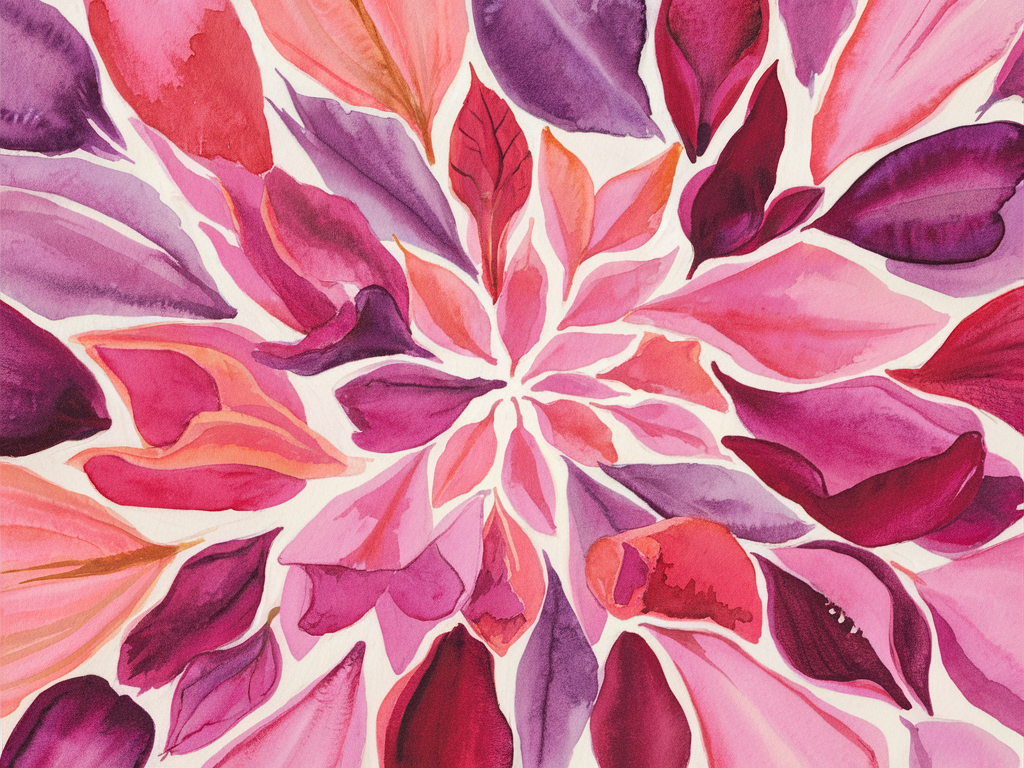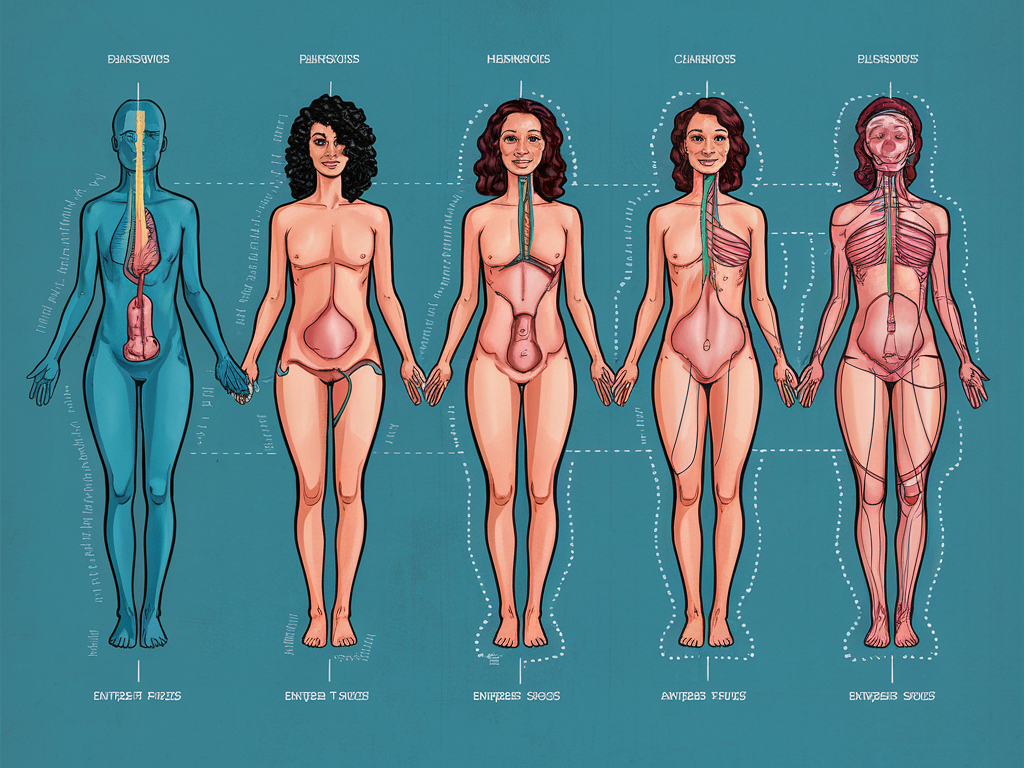Female genital anatomy varies widely from person to person, yet many women worry that their bodies aren’t “normal.” The appearance of the labia – the folds of skin around the vaginal opening – can be particularly concerning for those who don’t see bodies like their own represented in media or discussed openly. The truth is that labia come in countless variations of shapes, sizes, and colors, all of which are completely natural and healthy.
Understanding this diversity is crucial for women’s self-esteem and body confidence. Unfortunately, limited representation in educational materials, coupled with unrealistic portrayals in pornography and certain media, has created anxiety about what constitutes “normal” genital appearance. This comprehensive guide examines the most common labia variations to help normalize the beautiful diversity of female anatomy.

1. Asymmetrical Labia
Asymmetry in labia is extraordinarily common – in fact, it’s more the rule than the exception. Just as most people have one foot slightly larger than the other or one ear positioned differently, genital asymmetry is a natural part of human development. The labia minora (inner lips) particularly tend to develop asymmetrically, with one side extending longer or appearing different in shape than the other.
Dr. Sarah Johnson, gynecologist at Women’s Health Associates, explains: “I’d estimate that about 70% of women have some degree of labial asymmetry. It’s completely normal and has no impact on sexual function or reproductive health. Our bodies aren’t perfectly symmetrical anywhere – why would our genitals be any different?”
This natural asymmetry might become more noticeable during puberty and can continue to change subtly throughout a woman’s life due to hormonal fluctuations, childbirth, and aging.
2. Longer Labia Minora
When the inner labia (labia minora) extend beyond the outer labia (labia majora), this is known as labial hypertrophy in medical terminology – though this clinical term can be misleading as it suggests something excessive, when in fact this variation is entirely normal. The length of the labia minora can vary significantly, with some extending a few millimeters beyond the outer labia and others extending several centimeters.
This natural variation has unfortunately been stigmatized in some cultures and through pornographic imagery that often features digitally altered or surgically modified genitals. This has led to a rise in labiaplasty surgery – a concerning trend when many women seek these procedures despite having completely normal anatomy.
Studies of female genital variation show that labia minora length commonly ranges from 0.7 to 5 centimeters, with measurements up to 10 centimeters still falling within the spectrum of normal anatomical variation. Longer labia can provide additional sensation during sexual activity and offer evolutionary advantages in terms of protection and lubrication.
3. Hidden Labia Minora
At the other end of the spectrum are labia minora that remain entirely tucked within the outer labia majora. This configuration is sometimes called a “Barbie” or “smooth” vulva in non-medical contexts, though health professionals avoid such terminology as it can be stigmatizing to other variations.
The visibility of the inner labia depends on many factors, including genetics, hormonal status, and body weight. With hidden labia minora, the vulva may appear as a simple crease when viewing the genitals in a standing position. During arousal or when the legs are spread, the inner structures may become more visible.
This variation is completely normal and healthy. It’s worth noting that the visibility of the labia minora can change throughout life, particularly after childbirth or with age-related changes in tissue elasticity and fat distribution.
4. Prominent Labia Majora
The outer lips of the vulva, called the labia majora, protect the more delicate internal structures. These outer lips can vary significantly in size, fullness, and prominence. Some women have naturally fuller, more pronounced labia majora due to genetic factors and fat distribution patterns.
The appearance of the labia majora can change throughout life. During puberty, they develop and become fuller as estrogen levels rise. Weight fluctuations can affect their size since they contain fatty tissue. During pregnancy, increased blood flow may make them appear larger or darker, while postmenopausal women often notice the labia majora becoming less full as estrogen levels decline.
All of these changes and variations reflect normal biological processes rather than abnormalities. Prominent labia majora perform the important function of cushioning and protecting the internal genital structures.

5. Color Variations
Labial tissue naturally varies in color from pale pink to deep brown, purple, or reddish hues. This coloration is influenced primarily by genetics and individual pigmentation patterns – similar to how skin color varies across the body and between individuals.
It’s also completely normal for the color to vary across different parts of the vulva. Many women have labia that are darker around the edges and lighter toward the center, or vice versa. The inner labia are often a different shade than the outer labia due to differences in tissue type.
Changes in color can occur throughout life due to hormonal fluctuations. Many women notice temporary darkening during pregnancy due to increased estrogen production, while some experience permanent color changes after childbirth. These changes are normal aspects of reproductive development.
“The diversity in labial coloration is vast and entirely healthy,” notes Dr. Michelle Torres, OB/GYN. “I always reassure patients that there is no ‘correct’ color for genital tissue, just as there is no correct skin tone for the rest of the body.”
6. Textured Edges
The edges of the labia minora often have a naturally wrinkled, ruffled, or frilled appearance. These textured edges develop during puberty and contribute to the unique appearance of each woman’s vulva. The texture can range from slight rippling to pronounced frills that create a petal-like appearance.
This natural texturing serves biological functions. The wrinkles allow the tissue to expand during sexual arousal and childbirth, providing necessary flexibility. The increased surface area may also enhance sensory experience during sexual activity.
The degree of texturing varies widely between individuals and can even differ from one labium to another in the same person. Some women have more pronounced texturing toward the bottom of the labia, while others have relatively smooth edges with subtle rippling.
7. Size Changes Throughout Life
The appearance of the labia naturally evolves throughout a woman’s lifetime. During puberty, the labia develop under the influence of estrogen, growing in size and sometimes changing in color. These changes can happen quickly or gradually and may continue into early adulthood.
Pregnancy significantly affects labial appearance due to increased blood flow and hormonal changes. The labia may become temporarily larger, darker, and more sensitive. During childbirth, the labia stretch to accommodate the baby’s passage, and while they generally return to their previous state, some permanent changes in appearance are normal.
During menopause, decreasing estrogen levels can lead to thinning of labial tissue and reduced fullness of the labia majora. The tissue may become less elastic, and some women notice that their labia minora appear relatively more prominent as the outer labia lose volume.
All these changes represent normal development throughout a woman’s reproductive life rather than concerning alterations. The vulva, like all body parts, naturally changes with age and life experiences.
8. Variations in Visibility of the Clitoris
The clitoris is the primary organ responsible for sexual pleasure in women, but its external visibility varies significantly between individuals. The visible portion of the clitoris (the glans) is covered by the clitoral hood, which is formed by the joining of the labia minora at the top of the vulva.
In some women, the clitoral hood completely covers the glans clitoris, making it less visible. In others, the clitoral hood is smaller or positioned differently, making the glans more prominent. The size of the glans itself also varies, with the average being about the size of a pea, though it can be larger or smaller.
These variations have no correlation with sexual function or sensitivity. The clitoris extends internally much further than what’s visible externally, with erectile tissue that can be up to 5 inches in length surrounding the vaginal canal.
“Clitoral visibility is another aspect of genital diversity that’s perfectly normal,” explains sexual health educator Dr. James Rodriguez. “What matters is not how it looks but how it functions in terms of sensation and pleasure for each individual.”

9. Effects of Hormones on Labia Appearance
Hormonal fluctuations throughout the menstrual cycle can temporarily affect labial appearance. During ovulation or periods of high estrogen, increased blood flow may cause the labia to appear slightly fuller or darker. Some women notice their labia feeling more sensitive during certain phases of their cycle.
Sexual arousal causes significant temporary changes to the labia. Increased blood flow makes the tissues swell, with the labia minora often darkening and expanding. The labia majora may separate and flatten slightly during high arousal. These changes facilitate sexual activity and return to baseline afterward.
Hormonal medications, including birth control pills, hormone replacement therapy, and certain treatments for conditions like endometriosis, can influence labial appearance over time. These effects vary widely depending on the specific hormones and their concentrations.
These hormonal influences highlight how dynamic female genital anatomy is, naturally responding to both biological cycles and external factors throughout life.
10. Cultural and Individual Perceptions
Perceptions of what constitutes “normal” or “ideal” genital appearance vary dramatically across cultures and time periods. In some cultures, fuller or more prominent labia have historically been celebrated as signs of fertility and womanhood, while in others, less visible labia have been considered preferable.
Contemporary Western beauty standards have been heavily influenced by pornography, which often features performers with surgically altered genitals or uses digital editing to create a homogenized appearance. This narrow representation has contributed to anxiety among women whose bodies naturally differ from these artificial standards.
A 2018 study published in the Journal of Sexual Medicine found that exposure to images of diverse, unaltered vulvas helped women feel more positive about their own genital appearance. This highlights the importance of educational resources that accurately represent the full spectrum of natural variation.
Individual preferences also vary widely. What matters most is not conforming to any external standard but developing a healthy relationship with one’s own body and understanding that diversity is the true norm.
Conclusion
Every vulva is as unique as a fingerprint, and this diversity is not only normal but beautiful. The variations in labia shape, size, color, and texture represent the natural spectrum of human anatomy rather than deviations from some imagined “ideal.”
It’s important to note that while all these variations are normal, any sudden changes, pain, itching, or discomfort should be evaluated by a healthcare provider. Under normal circumstances, however, the appearance of your labia is simply your body’s natural expression.
Organizations like the Vulva Gallery and the Great Wall of Vagina art project have worked to document and celebrate this diversity, helping women recognize their bodies in the spectrum of normal variation. Resources like these can be valuable for those seeking reassurance about their anatomy.
Ultimately, understanding and embracing the natural diversity of female genitalia is an important aspect of body literacy and self-acceptance. Your labia are perfectly designed for your body – exactly as they are.

